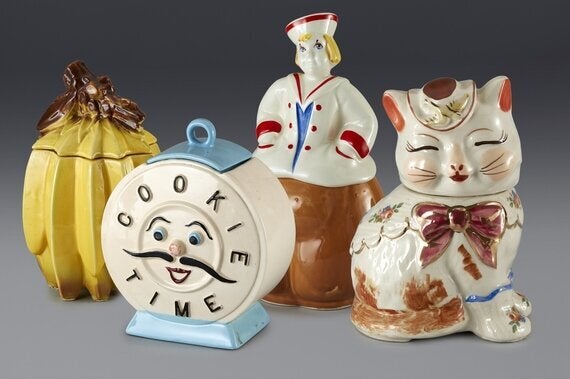
Magnificent Obsessions has a fascinating premise - to gain insight into the work of a number of post-war and contemporary artists from around the world through examination of their personal collections.
The Artist as Collector is the theme, and there are some wonderful pieces of art and artefacts on show including 17th century Japanese armour and some beautiful Indian rugs.
But then these are shown alongside what seems like the literal manifestation of eBay with Disney collectables, vintage Wish You Were Here postcards, tacky mini-Statue of Liberty statuettes made for tourists and themed salt and pepper sets. It's both extraordinary and bizarre.
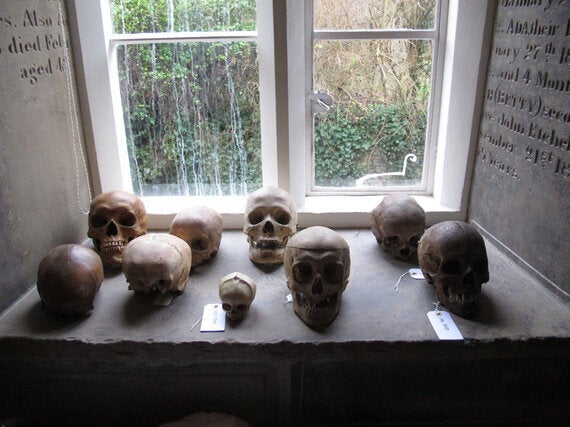
Yet all brought together they not only challenge the notion of value - who am I to judge what another person considers valuable? - but considering how often we try to split the art from the artists, Magnificent Obsessions makes for an interesting reversal.
The exhibition is compartmentalised into areas, with personal objects belonging to an artist shown alongside some of their work, encouraging us to link the artist and the collector within.
It's no surprise that Damien Hirst's section is filled with human skulls and taxidermy, the most impressive of which is a full size stuffed lion from Somalia dated c. 1880. Yet what is surprising is that Hirst is by no means the only artist with these interests.

Hiroshi Sugimoto has an impressive collection of prosthetic human eyes and anatomical prints, as well as fossilised bird eggs and stingrays. Similarly, Peter Blake likes taxidermy, though his preference is more for those bizarre items from the Stromboli collection such as "mermaids" and six-legged lambs.
Elsewhere there's plenty of kitsch and, unsurprisingly, Andy Warhol leads the way here. The man was fixated with collecting cookie jars. You know the ones, cheap factory-made jars in the figure of large white rabbits, cats and pandas.
Showing these alongside some of the man's most famous work, such as his seminal silk-screened boxes of Brillo, Campbells and Heinz from 1964, makes sense. Yet what's most interesting is the observation that for Warhol, it was the possession, the act of ownership, which was of more interest to him then appreciating the object.
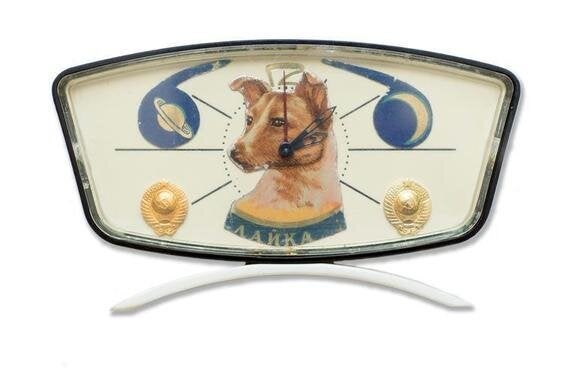
A lot of these jars were apparently found discarded around his New York townhouse after his death, still in their boxes and wrapping, or often still in the plastic bags he carried them home in, just discarded into corners of his home.
Similar obsessiveness you can see in Martin Parr's wonderful collection of Russian space dog memorabilia. I've never seen such an impressive collection of, well, junk with pictures of the dogs the Soviet Union rocketed into space during the Cold War emblazoned across badges, plaques, even clocks.
This attraction to items that might be undesirable really comes out in Jim Shaw's collection of thrift store art. There is an absence of technical achievement in these paintings yet Jim was drawn to that, attracted by their crude, dream-like surreal representations, whether it's the robot man about to take the nubile young woman, or the distorted cat's head.
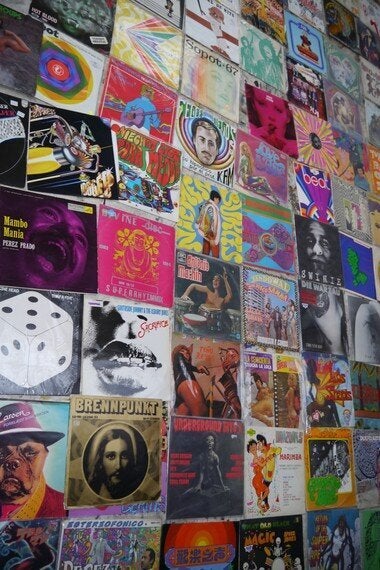
The curation of the exhibition is excellent. Each area for each artist has been made into its own little world. As an entirety, the exhibition comes across as a collection of worlds within a world - each room having an entirely different vibe.
Vivid, bold colour palettes grab you in the areas for Dr Lakra, Howard Hodgkin and Pae White. For Dr Lakra, a whole wall is smothered with brightly coloured album covers from his personal record collection. Bands from his native Mexico are shown alongside international stars such as Billy Idol and 50 Cent. And with the music pumping through the speakers, there's such a passion and sense of life in this section.
And this all flows into his work of pin-up girls on vintage magazine covers where he has covered their exposed skin with some fine, intricate and exquisitely executed ink "tattoos". This blend of the old and the new is wonderful.
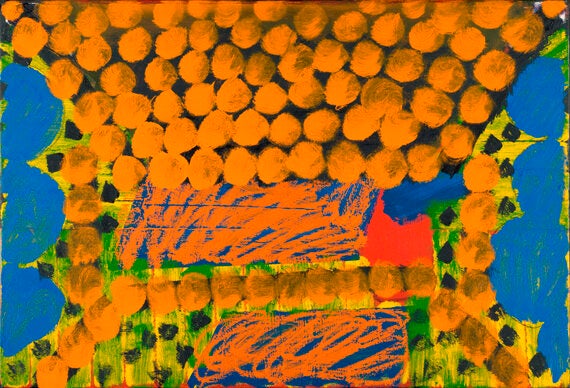
This commonality between collection and output could also be clearly seen in Howard Hodgkin's collection of Indian paintings, tapestries and rugs. The bold colours from his collection transferred beautifully into his The Studio of Jamini Roy. Yet it's interesting that Howard himself doesn't see such an explicit connection - "any resonance comes from the shared experience of India."
Similarly, the stunning impact of Pae White's bright washing line of collected Vera Newman textiles could be seen in her Cloud Cluster work - delicate cage-like forms made of colourful wires suspended overhead.
So if this is the case, it's interesting to consider what feeds what - do artists collect items to help them with their work, such as magazines, models and anatomical drawings? Or does their output reflect their own personal interest? The inspiration, I expect, flows both ways.
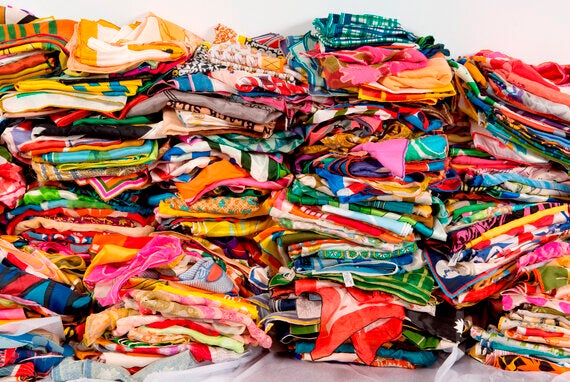
If you like your art exhibitions to be an orthodox collation of polished, final works then this show may not be for you. But if you're someone who is fascinated by the creative process, this exhibition gives an intriguing glimpse into the thoughts of an impressive range of artists.
Barbican Centre, London to May 25, 2015
Image Credits:
1. Cookie jars formerly in the collection of Andy Warhol. Image courtesy the Movado Group
2. Skulls on display in Damien Hirst's house, Courtesy Murderme Collection
3. 50 Glass Eyes, 1811-88 Collection of Hiroshi Sugimoto
4. Desk clock with Laika and planets, c.1950-60. Collection of Martin Parr © Martin Parr Collection/ Magnum Photos/ Rocket Gallery
5. Dr Lakra, Album covers from the collection of Dr Lakra. Photo by Dr Lakra
6. Howard Hodgkin, the Studio of Jamini Roy, 1976-79 Government Art Collection © Howard Hodgkin. Courtesy Gagosian Gallery © image: UK Government Art Collection
7. Scarves designed by Vera Neumann in the collection of Pae White. Photo by Justin Piperger. Copyright © VNIP Holdings, LLC. Reprinted by permission of VNIP Holdings, LLC.